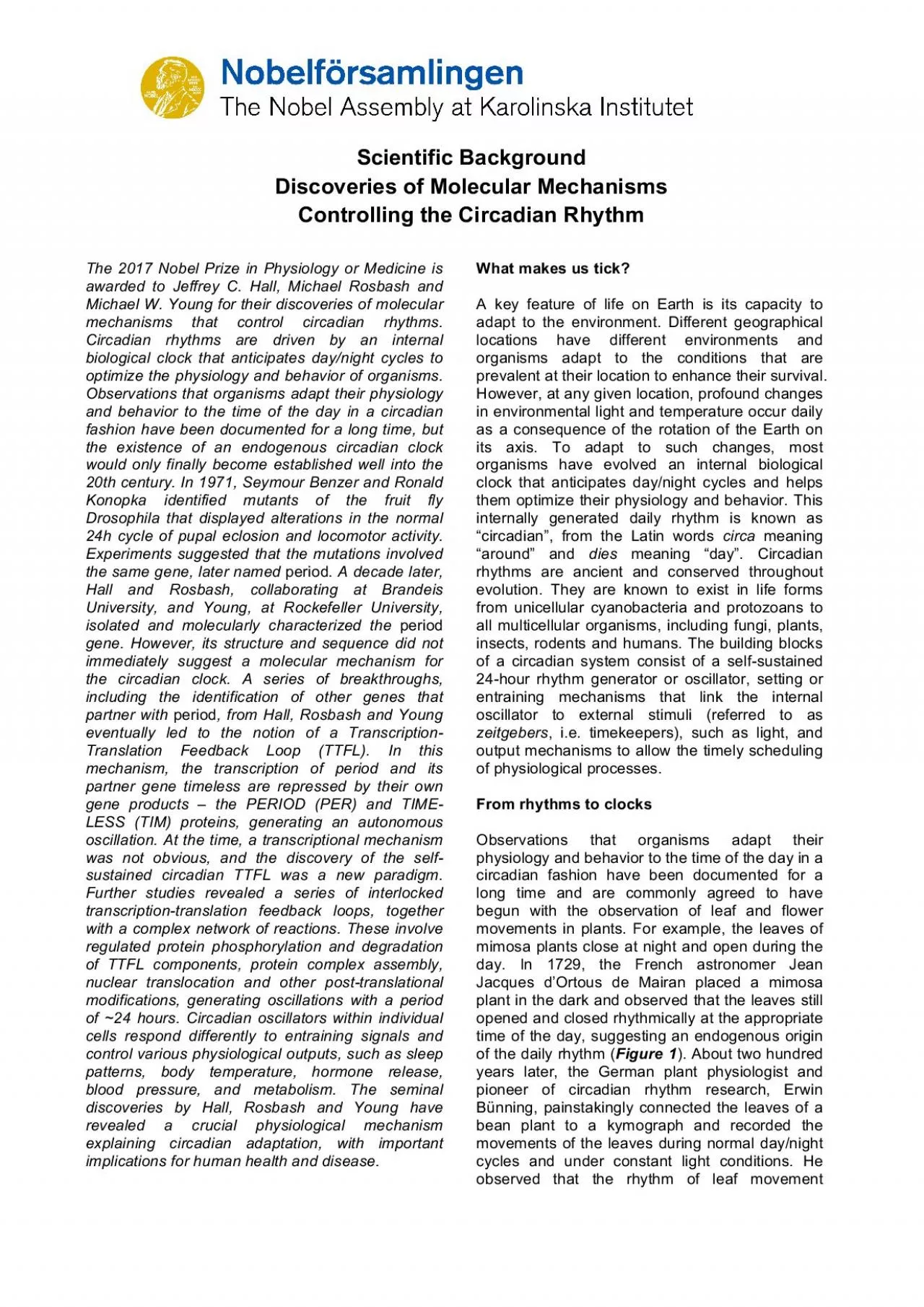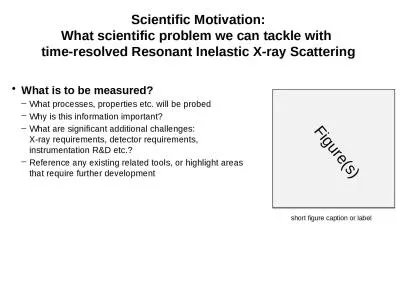PDF-Scientific Background
Author : hadly | Published Date : 2022-08-23
Discoveries of M olecular M echanisms C ontrolling the C ircadian R hythm The 2017 Nobel Prize in Physiology or Medicine is awarded to Jeffrey C Hall Michael Rosbash
Presentation Embed Code
Download Presentation
Download Presentation The PPT/PDF document "Scientific Background" is the property of its rightful owner. Permission is granted to download and print the materials on this website for personal, non-commercial use only, and to display it on your personal computer provided you do not modify the materials and that you retain all copyright notices contained in the materials. By downloading content from our website, you accept the terms of this agreement.
Scientific Background: Transcript
Download Rules Of Document
"Scientific Background"The content belongs to its owner. You may download and print it for personal use, without modification, and keep all copyright notices. By downloading, you agree to these terms.
Related Documents














